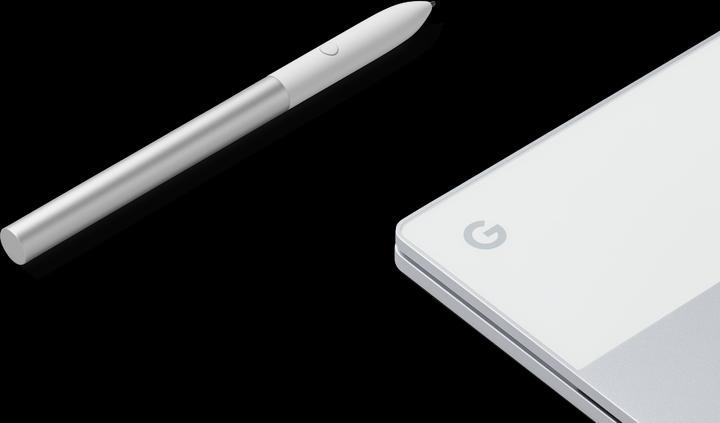
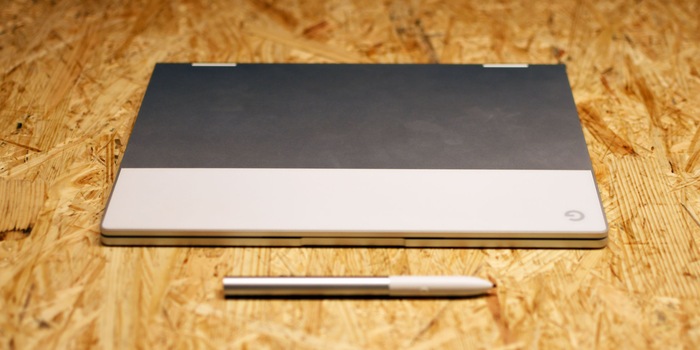
Google Pixelbook: A Chromebook for over 1600 francs. Madness or a stroke of genius?
Google launches its second premium Chromebook on the market. Thinner, lighter, more versatile, but still just as expensive. Can it steal a march on the iPad Pro thanks to stylus support or who is the device intended for?
Wow, it's small and light. I have exactly the opposite reaction to the Surface Book 2: the Pixelbook from Google is just 10 millimetres thin and weighs just over a kilogram. The aluminium casing feels extremely elegant. This is exactly how a 1600 francs laptop should feel. But the Pixelbook is no ordinary laptop. It is a Chromebook and these are normally known for their wallet-friendly prices. The Pixelbook is Google's high-end luxury version. But is there even a buyer for it?
Hardware - only the best
Google offers you a lot for the hefty price. I tested the version with Kaby Lake Intel i5 processor, 8GB RAM and 256 GB SSD. However, the Pixelbook is also available with i7, 16 GB RAM and 512 GB SSD - all completely fanless. This is first-class equipment, and not just for a Chromebook. The workmanship is impeccable. The device looks as if it has been cast from a single mould, feels incredibly good in the hand and the keyboard is very comfortable to type on (currently only US version). The keys are very short, but I still type extremely precisely on them. The trackpad is a good size for a small laptop and, like the touch display, responds precisely and reliably.
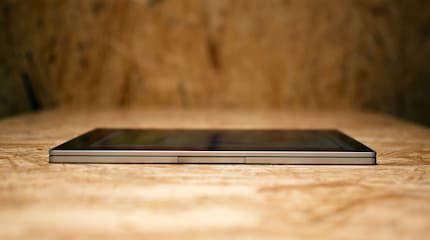
The palm area is rubberised. I found this a bit strange at first, but after a short time you get used to it. I would still have preferred aluminium. Visually, it makes an incredibly good trap. The Pixelbook is simply a really stylish device that is almost perfect in terms of hardware. Only the display would have benefited from narrower edges.
The device has two USB-C ports and a headphone jack, with the ability to drive a 4K monitor. Don't plug the USB cable into your HP notebook to charge it, like me. My business laptop completely crashed twice when I did this. Google is probably allergic to foreign devices or the first step is to subjugate all electronic devices and then launch Skynet.
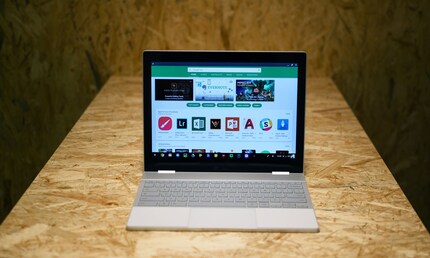
The display has a resolution of 2400 x 1600 pixels, is correspondingly razor-sharp and has rich colours. There's nothing to complain about here. It can be folded down so that you can use the Pixelbook like a tablet. Such 2-1 devices often appear clunky and unwieldy in this form. The Pixelbook is one of the few exceptions. This is primarily due to its low weight and thickness. This is also one of the first major differences to the 2013 Chromebook Pixel. The first premium Chromebook from Google.
Flexibility thanks to pen and touch display
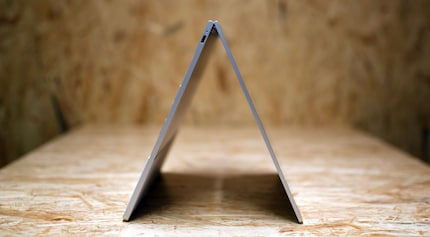
The Pixelbook has a 360° rotatable display. You can set it up like a tent if you want to present something or watch a film on it. Or you can fold the display down completely and use it like a tablet. This is where the optional pen comes into play, for which you pay an extra 140 francs. After all, some Wacom pens are also compatible. The Pixelbook Pen works with an AAAA battery. Simply unscrew it, insert the battery, tap the display and it's ready to use. It couldn't be easier. After that, however, it took me about an hour to work out how to use the button on it. The instructions simply say: press the button to use the Google Assistant. Nothing happens. No matter whether I press hard, long or double. What's the problem? The Assistant doesn't pop up like it usually does. Instead, if you press and hold the button, you can use the stylus to mark things on the display, which the Assistant then interprets. So a word, a sentence or a picture. This is really practical, primarily of course when you use the Pixelbook as a tablet. With the stylus, the device is aimed at a similar area of use as the iPad Pro, which in turn imitates the Surface. However, there is one crucial difference.
The big problem: software
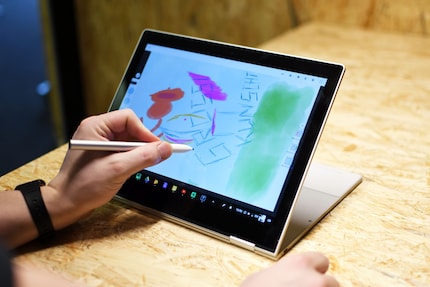
Unlike the iPad Pro, which has access to a huge library of apps, many of which are compatible with the stylus, the Pixelbook is currently still a bit of a waste. Surface devices also have a much better selection of suitable software. Google shows just 16 apps in the Play Store that work with the Pixelbook Pen. However, there are slightly more. Apps such as OneNote also work wonderfully with a pen. The fact that you can now also install normal Android apps on Chromebooks is good news. However, very few of them are optimised and often work more poorly than good. There are also still far too many duplicate apps, such as apps that are available in both the Chrome Store and the Google Play Store. Just not completely identical. The few that are designed for the pen are at least convincing. Google Keep, Evernote or Adobe Photoshop Sketch are ideal for sketching, drawing or writing. The pen responds with similar precision to the Surface Pen. Perhaps a little slower, but definitely reliable enough for you to scribble on various pages in no time at all.
But the fact that not even Google Docs works with the pen says a lot. If Google doesn't even adapt its apps, who will? So the functionality of the pen remains severely limited.
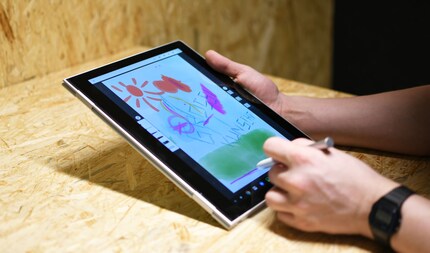
Even apart from the pen, the Chrome OS is a double-edged sword. On the one hand, it is excellent to work on. Nowhere else does Chrome run faster, you have various writing programmes, Photoshop, notes, music and videos at your disposal. The problems start when you need a programme that is not compatible with Chrome OS or Android and there are many of these, depending on the work area. With Windows, you can install almost anything and there are almost always alternatives. These are usually also available on Chrome OS, but the quality often leaves a lot to be desired. There is also no Caps Lock button, instead there is a button with a circle symbol that can be used to search the Pixelbook. But the cunning key wizard Ramon Schneider has discovered that ALT + circle key sets Caps Lock. I can only express myself properly with ALL CAPS RAGE.
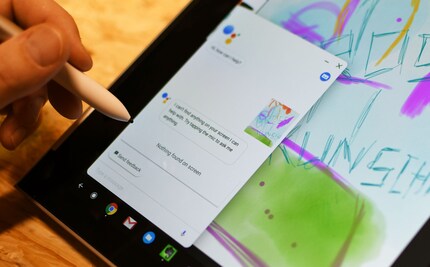
Conclusion: The best Chromebook ever, but is it enough?
The Pixelbook is an impressive piece of hardware. You want to own it, but there are just too many limitations. The browsing experience is arguably the best you can get on any device. But even if the browser doesn't run as smoothly everywhere as it does on the Pixelbook, very few people are likely to buy a new device because of it. The small selection of apps that are compatible with the stylus make it a tough recommendation. Yes, you can install Android apps and potentially millions of applications are available to you. But with Android tablets already lagging behind the iPad in this regard, the Chromebook looks even older. You always come up against limits. Depending on how willing you are to accept workarounds, the Pixelbook is still an extremely productive machine. Without the ballast of Windows or MacOS, the system runs extremely smoothly and in 90 per cent of cases, Chrome OS is enough for you. A lot has changed since the 2011 release, from the intuitive user interface to the integration of the Google Assistant and practical functions such as unlocking with your smartphone.
Thanks to pen support, the operating system is on the right track to remain an attractive alternative, especially for students. However, at a price of 1600 francs, the question arises as to who would buy a Pixelbook. Even if it is a beautiful device that cuts a good figure all round on the hardware side, it remains difficult to recommend it to anyone. If you are sure that Chrome OS covers all your needs and you want the best Chromebook of all, then the Pixelbook is the one for you. Everyone else is better off with the iPad Pro, Surface Pro, etc.
As a child, I wasn't allowed to have any consoles. It was only with the arrival of the family's 486 PC that the magical world of gaming opened up to me. Today, I'm overcompensating accordingly. Only a lack of time and money prevents me from trying out every game there is and decorating my shelf with rare retro consoles.
